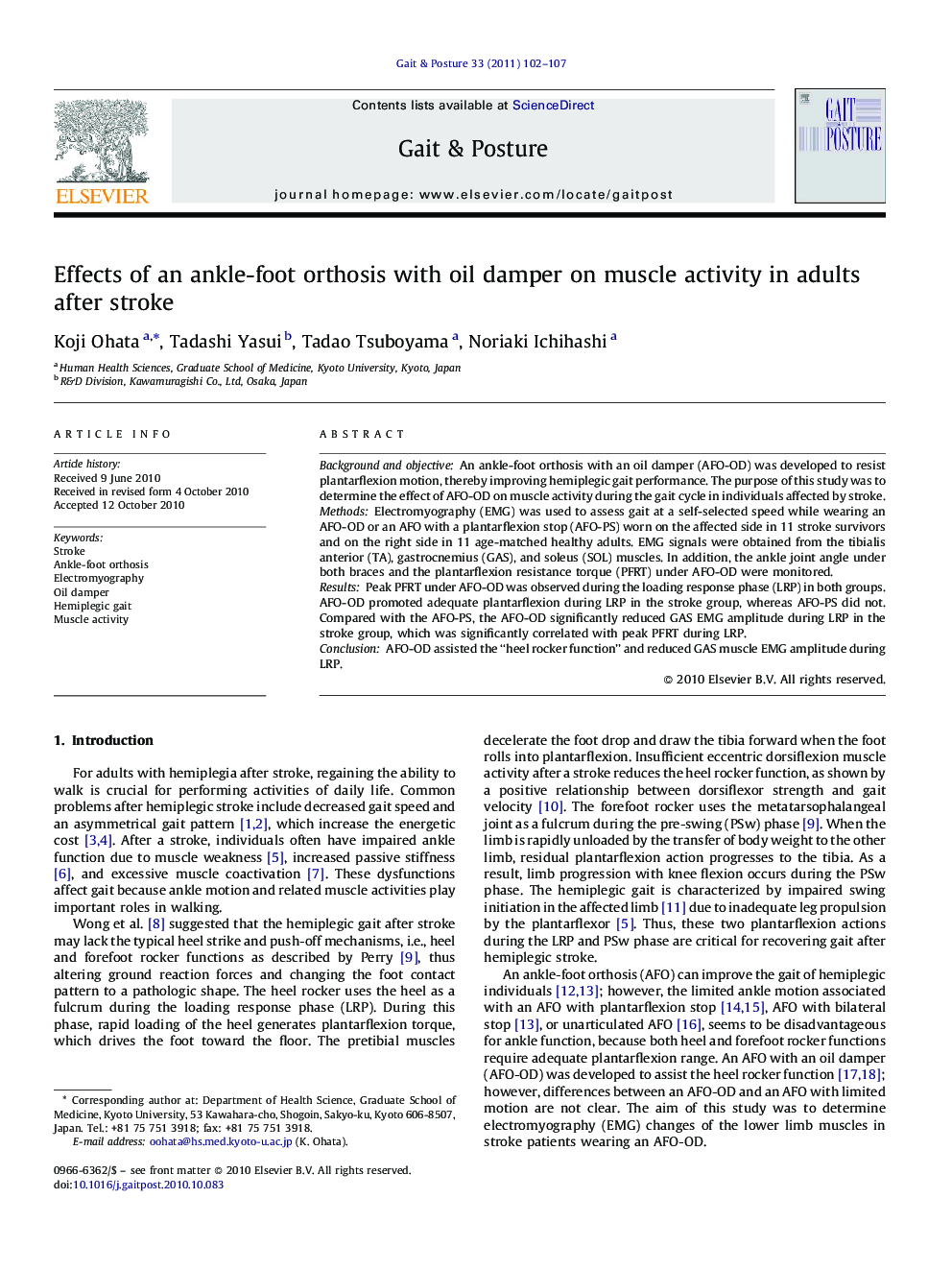| Article ID | Journal | Published Year | Pages | File Type |
|---|---|---|---|---|
| 6207650 | Gait & Posture | 2011 | 6 Pages |
Background and objectiveAn ankle-foot orthosis with an oil damper (AFO-OD) was developed to resist plantarflexion motion, thereby improving hemiplegic gait performance. The purpose of this study was to determine the effect of AFO-OD on muscle activity during the gait cycle in individuals affected by stroke.MethodsElectromyography (EMG) was used to assess gait at a self-selected speed while wearing an AFO-OD or an AFO with a plantarflexion stop (AFO-PS) worn on the affected side in 11 stroke survivors and on the right side in 11 age-matched healthy adults. EMG signals were obtained from the tibialis anterior (TA), gastrocnemius (GAS), and soleus (SOL) muscles. In addition, the ankle joint angle under both braces and the plantarflexion resistance torque (PFRT) under AFO-OD were monitored.ResultsPeak PFRT under AFO-OD was observed during the loading response phase (LRP) in both groups. AFO-OD promoted adequate plantarflexion during LRP in the stroke group, whereas AFO-PS did not. Compared with the AFO-PS, the AFO-OD significantly reduced GAS EMG amplitude during LRP in the stroke group, which was significantly correlated with peak PFRT during LRP.ConclusionAFO-OD assisted the “heel rocker function” and reduced GAS muscle EMG amplitude during LRP.
